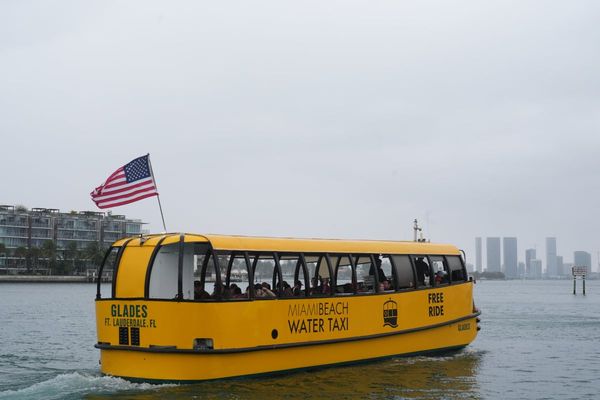
If Cillian Murphy's track record is anything to go by, Small Things Like These will be another exquisite piece of cinema. The actor is set to star in the upcoming adaptation of celebrated Irish writer Claire Keegan's 2021 novella of the same name, which was shortlisted for the Booker Prize and won the Orwell Prize for political writing.
Starring alongside Eileen Walsh (The Children Act), Emily Watson (Chernobyl), Michelle Fairley (Game of Thrones) and Clare Dunne (The Last Duel), Murphy will play Bill Furlong, a coal merchant father of five daughters in Catholic Ireland in 1985.
In the biting winter cold, while he is working, Furlong uncovers some terrible secrets that have been hidden by his town's convent – namely involving its part in the country's appalling Magdalene Laundries.
These workhouses, institutions run by religious orders for centuries, housed as many as 30,000 'troubled' women from the 18th century until as recently as the 1990s. Women of all ages were often kept against their will, abused and separated from their children.
"The novel isn’t just an eloquent attack on the Magdalene Laundries. It is also a touching Christmas tale, genuinely reminiscent of the festive stories of O Henry and Charles Dickens," said one reviewer.
But speaking during an interview with the Guardian, Keegan rejected that the book was "about" the Magdalene Laundries, seeing the scandal as being part of the environment and atmosphere of Furlong's life.
Here we answer some of the big questions about the Magdalene laundries ahead of the film's February 15 world premiere at the Berlin International Film Festival.
What were The Magdalene laundries?
The Magdalene laundries were workhouses run by religious orders, where “troubled” and “fallen” women were forcibly sent. These women had usually behaved in ways that members of their communities found inappropriate: i.e. they became pregnant outside of wedlock, were seen as being promiscuous, were outspoken, were felt to be burdens to their families, were orphans or from broken homes, or were simply the daughters of unmarried mothers.
There are varying reports about the age range of the women sent to the laundries, with some reports saying that the youngest admission was nine years old, and the oldest being 89 years-old.
Four Catholic orders – the Sisters of Mercy, Sisters of Charity, Sisters of our Lady of Charity of Refuge, and the Good Shepherd Sisters – were largely in charge of the running of the laundries, although there were a few protestant laundries in the early days of the institutions.
Why were they called the Magdalene laundries?
Named for the biblical figure Mary Magdalene, who was traditionally considered to have been a fallen woman herself, they were described as laundries because the asylums were laundry and needlework businesses that worked their unpaid prisoners for a profit.
What happened inside the Magdalene laundries?
Not only were they imprisoned within these institutions against their will, and often had their children taken away from them, the inmates of the laundries were also forced to carry out unpaid labour seven days a week, and were malnourished and kept in unclean living spaces, suffering mental and physical abuse.
According to the charity Justice for Magdalenes Research, the women and girls were sometimes confined to small, windowless spaces, or kept behind high walls lined with shards of glass.
The women and girls weren’t allowed to speak, weren’t allowed to make outside contact, had their names changed and were ordered not to speak about their home lives. They often had their hair cut on entry, and wore a uniform.
One survivor, Marina Gambold, told the BBC that she was made to eat off the floor; when she broke a cup she had a piece of thick string tied around her neck for three days as punishment; and one time she was locked outside for two days with nothing but a glass of water. Another survivor testimony said that women were made to kneel on the hard floor for hours at a time.
Because of the poor level of hygiene, mortality rates were high – particularly in children – and diseases such as TB, pneumonia, measles and gastroenteritis ran rife.
Singer Sinead O’Connor said that she had been sent to a laundry when she was 14 years old, and was housed there for a year. “It was a prison. We didn’t see our families, we were locked in, cut off from life, deprived of a normal childhood,” she said in an interview with Irish Central in 1993. “We were told we were there because we were bad people. Some of the girls had been raped at home and not believed.”
According to a 2013 government report in which 2,000 witnesses testimonies were taken, just one woman they interviewed said she was subjected to sexual abuse while at a laundry – no other women made the same allegations.
How did women come to be sent there?
Women arrived at the laundries via multiple routes: sometimes they went via the criminal justice system, some were sent by their families or a priest. Some were sent by medical professionals, and others by social services or by psychiatric hospitals and institutions for the intellectually disabled. Adoption societies would send unmarried pregnant women to the laundries, as would reform schools and county homes (institutions that were like workhouses for the poor). The NSPCC also sent women to the laundries.
Fascinatingly, some women would also refer themselves to the laundries. These women may have been desperate (fleeing violence or unable to look after themselves, for example), under a huge amount of pressure from their communities, and may not have known just how terrible the institutions were. Speaking to the BBC, one survivor, Maureen Sullivan, said that nuns told her mother she would be going to a “lovely school”. But once the girls arrived at the laundries they were not educated and were put to work instead.
Women were sent to the institution for petty crimes too – not paying a train ticket, for example, could lead to a stint at one of the laundries.
The Magdalene laundries: the numbers
There were 10 workhouses around Ireland whose total capacity at any given time was 1,200 people.
Although the institutions had been open since the 18th century – the first laundry opened on Leeson Street in Dublin in 1767 – the 2013 government report looked specifically at the period between 1922 and the closure of the last Magdalene laundry in 1996, investigating from the point when Ireland became a republic.
Over the 1922 to 1996 period, the government report found that there had been 14,607 known admissions in the institutions – but given repeated entries and mistakes with documentation the report revised this number to 11,198. The number of admissions rapidly decreased after the Seventies: 660 women were admitted in the Seventies, 147 in the Eighties and just eight in the Nineties.
Women stayed at the laundries for anything from one week to over ten years. 14.4 per cent of women housed at the laundries stayed for over five years and 7.7 per cent were there for more than a decade. Subjected to years of abuse, often from a young age, some women inside the asylums became institutionalised and could not easily rejoin society.
When did the last laundry close?
The last laundry closed in 1996.
What has been the fallout in recent years?
For a long time the laundries weren’t spoken about publicly, although people knew that these workhouses existed. However, Ireland underwent huge social change in the Nineties and members of the public felt able to start questioning some of the Catholic Church’s authority and historic behaviour. A Commission to Inquire into Child Abuse was created by the Irish government in 1999, and in 2009, the commission released a searing report detailing thousands of sexual abuse cases in the Catholic Church.
Four years later the government released a report to “establish the facts of State involvement with the Magdalen Laundries”. The report used official records, testimony from 2,000 of the committed women, and original source documents to build a picture of the events that took place at the laundries. As a result of the publication of the report, which detailed the asylums’ many abuses and also looked into the state’s involvement in the institution, Irish Prime Minister Enda Kenny apologised to the women, girls and their families whose lives have been affected by the laundries.
Speaking to Irish parliament Kenny choked back tears and said: “This is a national shame for which I say again I am deeply sorry and offer my full and heartfelt apologies.”
“I, as Taoiseach, on behalf of this state, the government and our citizens, deeply regret and apologise unreservedly to all those women for the hurt that was done to them, for any stigma they suffered as a result of the time they spent in the Magdalene laundry,” he said. “We now know that the state itself was directly involved in over a quarter of all admissions.” This was a major moment for campaigners as the state had previously denied having sent women to the workhouses. He then introduced the government’s plans to compensate survivors.
Over the last decade, there have also been a few incidents related to unmarked or mass graves. In one case, more bodies were discovered on the grounds of a laundry than had been documented, indicating that deaths at the institution may have gone unreported.
In one particularly harrowing case in 2018, one area next to an asylum at Tuam, County Galway was set to be excavated after an investigation by local historian Catherine Corless alleged that the bodies of 800 babies could be buried somewhere on the site.
In January 2021, the leader of the Catholic Church in Ireland, Archbishop Eamon Martin said, “As a Catholic Church leader in Ireland it is I who now feel embarrassed and guilty over the way in which we in the church contributed to, and bolstered, that culture of concealment, condemnation, and self-righteousness... For that I am truly sorry and ask the forgiveness of survivors.”
Have there been other on-screen depictions of the laundries?
Yes. A 2003 a drama film titled The Magdalene Sisters told the story of three teenage girls who were sent to the asylums in the Sixties. The film starred Anne-Marie Duff, Nora-Jane Noone and Dorothy Duffy and received critical acclaim, winning the Golden Lion at the Venice Film Festival.
Then in 2013, Stephen Frears directed Philomena, a film based on the book The Lost Child of Philomena Lee by journalist Martin Sixsmith. Starring Judi Dench and Steve Coogan, the film told the true story of Philomena Lee, a woman whose son was taken away from her in a laundry and sold to wealthy Americans. The film was nominated for four Oscars including Best Picture.
Last August, the BBC also release a terrifying drama starring Ruth Wilson as Lorna Brady, an Irish woman who is struggling to recover from her own terrible ordeal with the Magdalen Laundries.
"Part noir, part horror, part thriller, part psychological drama, The Woman in the Wall is an exhausting watch, which gallops from past to present via the hallucinations of a haunted woman,” said the Standard. “But if you feel up to it, it’s worth the emotional toll."







